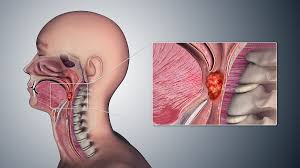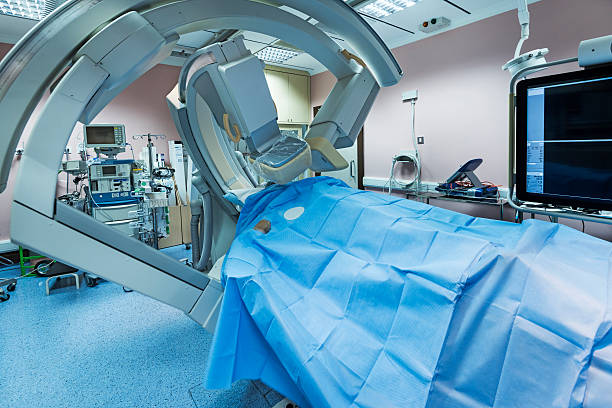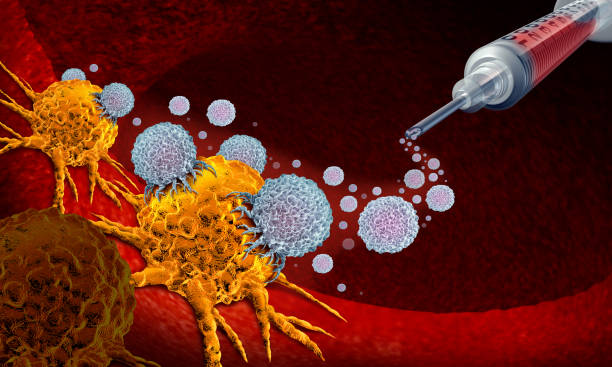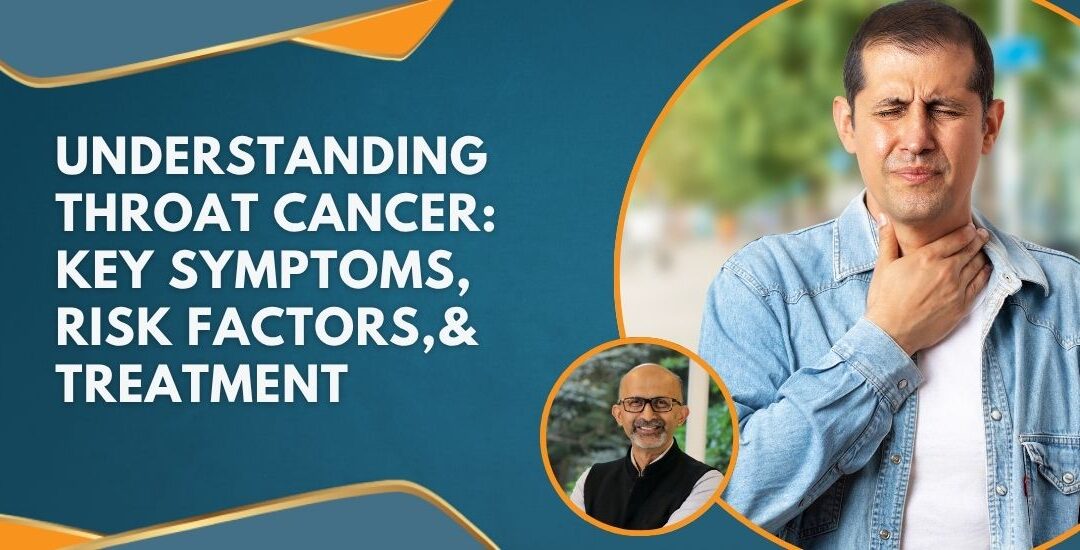The throat, one of the most vital parts of the human body, carries our breath, allows us to swallow food, and enables us to speak. Any disease that affects the throat can deeply disrupt daily life, sometimes in ways people don’t expect. Among these conditions, throat cancer stands as a serious health challenge, impacting both quality of life and survival.
Globally, approximately 7,50,000 new cases of head and neck cancers are diagnosed each year, with a significant portion being throat-related cancers. In India alone, a substantial portion of head and neck cancers forms a large share of the 1.3 million cancer cases recorded annually, often linked to tobacco and alcohol consumption.

Dr. Sandeep Nayak, a renowned surgical oncologist from Bangalore, explains:
“Throat cancer is not just a disease of the voice box; it is a condition that can affect swallowing, breathing, and even emotional well-being. The key to overcoming this challenge lies in awareness, early diagnosis, and access to modern treatment options.”
Types of Throat Cancer

The main areas include:
Pharynx: This tube runs behind your nose to your esophagus and is divided into three parts:
- Nasopharynx (behind the nose)
- Oropharynx (middle of the throat, includes tonsils)
- Hypopharynx (bottom of the throat before the esophagus)
Larynx (Voice box): Located just below the pharynx, this structure contains the vocal cords.
Within these areas, different types of throat cancers can occur:
Glottic cancer: Starts in the vocal cords.
Supraglottic cancer: Occurs above the vocal cords.
Subglottic cancer: Found below the vocal cords.
Oropharyngeal cancer: Affects the tonsils, base of the tongue, and surrounding tissues.
Why does this matter?
Because the type and location determine the symptoms you may notice and the treatment plan doctors recommend. For instance, glottic cancers may first present with persistent hoarseness, while hypopharyngeal cancers are often silent until advanced stages.
Dr. Nayak, a pioneering expert in minimally invasive oncology, notes:
“The exact site of throat cancer helps doctors decide not just the surgery, but also whether radiation or chemotherapy is needed. Each type brings unique challenges, but with modern technology, we can preserve voice, swallowing, and appearance in most cases.”
Causes of Throat Cancer

The leading causes and risk factors include:
Tobacco use: Cigarettes, cigars, and chewing tobacco are the strongest contributors.
Alcohol consumption: Heavy drinking combined with tobacco increases the risk several-fold.
Human papillomavirus (HPV) infection: Certain HPV strains are linked to oropharyngeal cancers.
Dietary factors: A lack of fruits and vegetables reduces natural protection against cancer.
Age and gender: Men over 50 are at higher risk, although cases in younger individuals are rising.
Family history: A genetic predisposition can also increase susceptibility to certain conditions.
The good news?
Many of these risk factors, like tobacco and alcohol, are preventable.
Symptoms of Throat Cancer

The key symptoms include:
- Hoarseness or voice changes lasting more than 2 weeks
- Difficulty swallowing (dysphagia) or pain while eating
- Persistent sore throat or the feeling of something stuck
- Swelling or lump in the neck that does not go away
- Unexplained weight loss and fatigue
- Ear pain (especially in oropharyngeal cancers)
- Coughing up blood in advanced cases
Dr. Nayak, an acclaimed cancer surgeon in Bangalore, advises:
“One of the most important messages for the public is not to ignore hoarseness or a lump in the neck that lasts beyond two weeks. While not every symptom means cancer, timely evaluation can make the difference between a small, curable tumor and advanced disease.”
Treatment for Throat Cancer
Treatment depends on the type, stage, and overall health of the patient. In modern oncology, the goal is not just survival, but also preserving speech, swallowing, and quality of life.
The main treatment approaches include:

Surgery
Minimally invasive procedures like transoral laser or robotic surgery are preferred when possible.
Advanced surgeries may involve the removal of part of the throat or voice box, with reconstruction to restore function.
Radiation therapy

High-energy beams target and destroy cancer cells.
Often used for early-stage cancers or combined with surgery/chemotherapy.
Chemotherapy

Drugs are administered orally or through IV to kill cancer cells.
Usually combined with radiation in advanced stages.
Targeted therapy & Immunotherapy

These modern approaches attack specific cancer cell mechanisms or boost the immune system.
The choice of treatment is highly personalized. In India, advanced centers like MACS Clinic in Bangalore now offer minimally invasiverobotic surgery, which reduces recovery time and improves outcomes. Globally, the overall 5-year survival rate ranges from 60% to 65%, although this varies depending on the site, stage, and access to treatment.
When to See a Doctor
It’s easy to dismiss early throat cancer symptoms as minor issues. However, medical experts emphasize that early medical evaluation is key. You should consult a doctor if you notice:
- Hoarseness, sore throat, or cough lasting beyond 2–3 weeks.
- A lump or swelling in the neck.
- Trouble swallowing food or liquids.
- Unexplained weight loss or fatigue.
- Prompt evaluation often allows for simpler treatment with better outcomes.
Conclusion
Frequently Asked Questions
What are the first warning signs of throat cancer?
Can you recover from throat cancer?
Can stage 4 throat cancer be cured?
How to check for throat cancer at home?
What is the throat cancer survival rate by age?
Is throat cancer what the Hollywood actor Michael Douglas had?
References:
https://my.clevelandclinic.org/health/diseases/23136-throat-cancer
https://www.mdanderson.org/cancer-types/throat-cancer.html
Disclaimer: The information shared in this content is for educational purposes only and not for promotional use.


